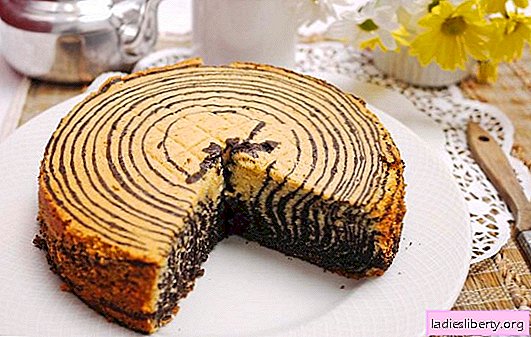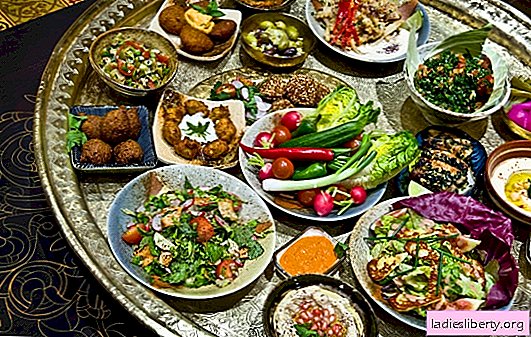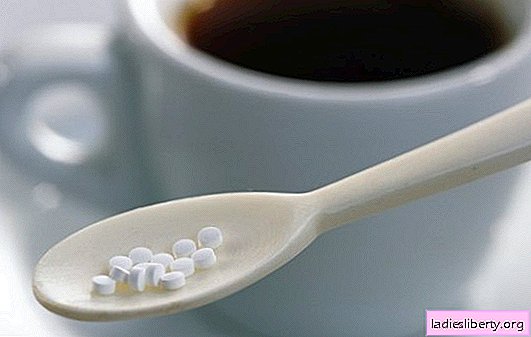
From four to five months, the baby begins to experience a deficiency in some useful substances, which he is no longer able to receive with breast milk. In addition, his digestive system at this age is ready to "take" additional complementary foods. Therefore, pediatricians, starting from 4-6 months, recommend that mothers introduce monocomponent vegetable and fruit purees into the baby’s diet. For the first acquaintance with vegetables, crumbs are ideally suited for pumpkin puree, cooked at home. It is rich in trace elements, especially carotene, is nutritious and contains fiber, which helps regulate digestion. If your baby is not allergic to pumpkin, be sure to give him healthy puree at least three times a week. He will surely enjoy his “sunny” color and pleasantly sweet taste.
Pumpkin puree for children - general principles and methods of preparation
The main goal of children's cooking is to make food safe, well-digestible, as healthy as possible and, of course, tasty so that the little little one does not turn its nose away from it. In principle, complex recipes for pumpkin puree for children do not exist. It all comes down to one thing - heat the vegetable and grind it using a blender or a conventional fork. As an additional ingredient in the absence of allergies in mashed potatoes you can add a green apple, bananas, carrots, potatoes, as well as other vegetables and fruits that are easily tolerated by your child.
It is very important to observe basic hygiene rules. The kid needs to allocate his own cutlery (plate, spoon, mug), and for making mashed potatoes parents must use individual dishes. By the way, devices for making mashed potatoes should first be rinsed with boiling water, this is especially true for children up to the first year, whose digestive system is most susceptible to various adverse factors.
As for refined sugar, here the opinions of mothers are divided: someone adds it in pumpkin puree in small quantities, and someone completely refuses it. To add or not add sugar to baby food is a purely individual matter and depends, first of all, on the physiological characteristics of the child. However, pediatricians recommend maximally limiting sucrose intake to young children, especially until the first year of life. In extreme cases, in the puree you can add natural fructose or sweet fresh fruit.
So, pumpkin for softening can be prepared in the following ways: bake in the oven (microwave), steam or by traditional cooking in a pan. The most gentle is the method of heat treatment of steamed vegetables. Typically, this approach avoids the "leak" of useful elements from the pumpkin during cooking.
Pumpkin puree for children - preparation of products
For baby puree, it is better to choose young, small fruits of pumpkin (weighing up to 3-5 kg), since they are less fibrous, very juicy and have a more pronounced pleasantly sweet taste. In addition, the skin is removed from those much easier than from large fruits. If the “shell” is still too hardened during long-term storage, then there’s nothing to worry about. After heat treatment, it will quickly and easily come off the pulp. Pumpkin seeds must be extracted (it is convenient to do this using an ordinary tablespoon), since they are not suitable for baby food.
Pumpkin puree for children - the best recipes
Recipe 1: Pumpkin puree for infants (up to 1 year)
Absolutely uncomplicated in the preparation of mashed potatoes, which is intended for children aged 4 to 12 months. And the fennel included in the puree will help the baby strengthen the digestive system and rid it of bloating.
Ingredients:
- pumpkin pulp
- whisper of dill (not stems)
- a little mother's milk (or mixture) for dilution
Cooking method:
Boil some pumpkin in a pan, double boiler or bake slices in the oven. Then beat in a blender with a sprig of dill. Stir everything until smooth. If the puree is too thick, it should be diluted with a few drops of the mixture or breast milk. It can also be diluted with vegetable broth or ordinary boiled water.
Recipe 2: Pumpkin Puree with Green Apple
Why green? Because it is practically non-allergenic and contains more vitamin C. During the preparation of mashed potatoes, it is necessary to chop the apple thoroughly so that no flakes or pieces remain. The proportion of the ingredients may vary depending on the mood and preferences of the baby (usually 50x50).
Ingredients:
- pumpkin
- green apple
Cooking method:
Heat the pumpkin in the usual way, so that it becomes soft, remove the skin, and turn the pulp into mashed potatoes. Be sure to peel the apple from the skin and seeds, grind it in mashed potatoes separately. Mix with the juice and pumpkin puree. For a change, an apple can be replaced with a banana.
Recipe 3: Baby pumpkin puree for the winter (from 6 months)
It is not difficult to feed the baby with homemade vegetable purees in the summer. But what if winter is in the yard and the vegetables have already outlived their own? Naturally, stocking them for the future with the help of a freezer. You can do a little differently - immediately make the baby puree pumpkin for the winter.
Ingredients:
- one medium pumpkin (ripe)
- sugar (get it brown) - about a glass
- one liter of water
- 200 gr. cranberries
- a pinch of cloves for taste
Cooking method:
We clean the pumpkin from seeds and fibers, cutting it in half. Cut into small pieces. We mix water with sugar in an enameled bowl and lay the pieces of pumpkin in the same place. We put on the stove and bring, constantly stirring, to a boil. Squeeze juice from cranberries and add it to the pumpkin. Cook for about 20 minutes, 5 minutes before cooking, throw a couple of seeds of cloves. Then we drain the water, and firmly grind the solid ingredients in a blender. While the mash is cooling, boil the jars, lids, dry them in a hot oven, and then lay the mash in jars and cork. Tasty and healthy pumpkin puree is ready for the winter!
Pumpkin Puree - Useful Tips
Each mother should remember: complementary foods for the baby should be administered with extreme caution. Firstly, this is due to the work of the gastrointestinal tract in the baby - saliva is still not released, and gastric juice is not produced. That is why complementary foods are introduced gradually, starting with easily digestible monocomponent vegetables. Secondly, for any component, even the most harmless at first glance, the peanut may develop an allergic reaction. As if mom wouldn’t want her child to quickly taste all sorts of goodies, you should not rush. Start small, with half a teaspoon, and if everything goes well, gradually increase the amount of complementary foods.
In addition to pumpkin pulp, many children enjoy drinking squeezed pumpkin juice, which is rich in vitamins and amino acids. And if the baby is constantly tormented by bloating or constipation, as well as inflammatory diseases of the urinary tract, then the use of such juice will become a real "lifeline" for them. It will help improve health and prevent relapse.
In recent years, much debate has been about the dangers of salt for young children. In fact, slightly salted mashed potatoes do not harm the growing body. But try not to overdo it, because too much concentration can cause a serious blow to the health of the crumbs. Salt does not need to be added to sweet pumpkin purees, but if the pumpkin is diluted with mashed potatoes or, for example, cauliflower, then a pinch will not hurt here. However, take your time. It is likely that your baby will be happy to eat vegetable puree without adding salt.











